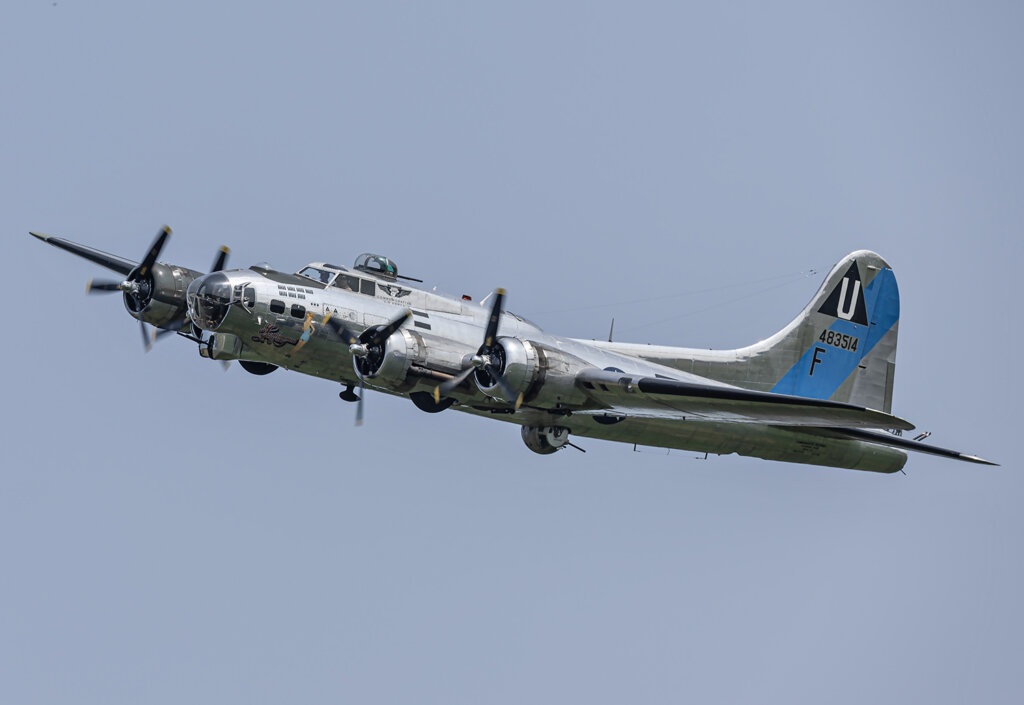
Owned by the Commemorative Air Force out of Mesa, Arizona, the Boeing B-17G Flying Fortress “Sentimental Journey” was built by Douglas Aircraft in late 1944.
[Stephen J. Thorne]
Crewed by 10 and bristling with up to 13 .50-calibre machine guns, formations of as many as 2,000 “Forts” would fly long missions in tightly stacked nine- to 12-plane “combat boxes” designed to concentrate defensive and offensive firepower.
Equipped with the much-ballyhooed Norden bombsight, they penetrated deep into Nazi-occupied territory and Nazi Germany itself. While the United States Army Air Forces’ accuracy by day marginally outperformed that of Royal Air Force Bomber Command’s nighttime missions, both paid mightily in aircraft and lives.
Neither had the luxury of comprehensive fighter escort until the long-range P-51 Mustang arrived with its drop tanks early in 1944. They had to contend with Luftwaffe fighters as they headed in and out of target areas and, on lower-altitude missions, anti-aircraft fire.
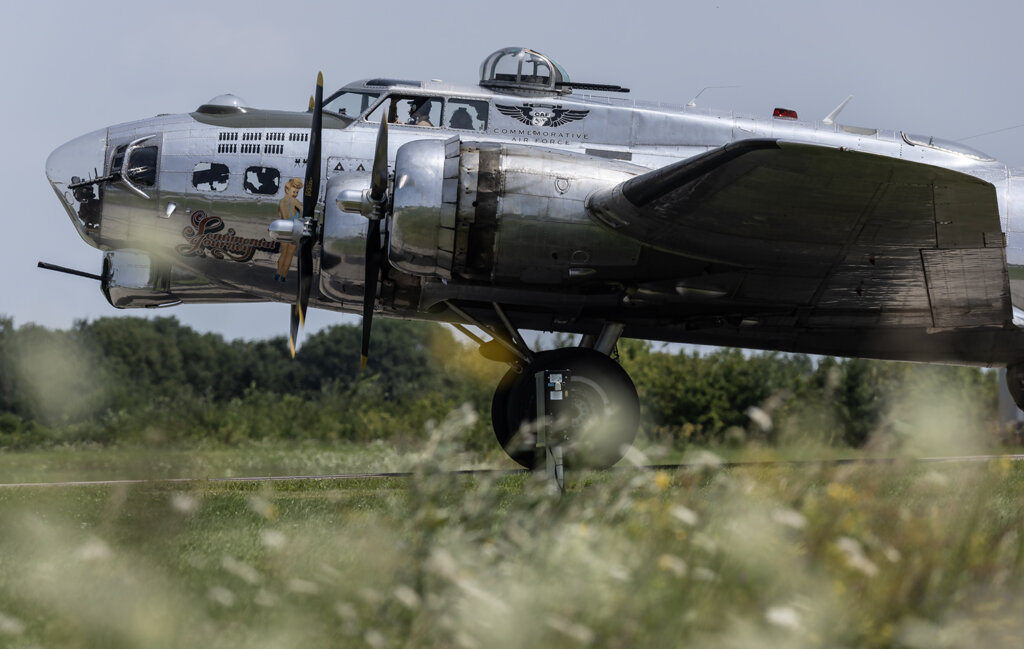
The plane entered service with the US. Army Air Forces in March 1945 and was assigned to the Pacific theatre before it was placed in storage in Japan. It would go on to perform multiple postwar services, including atmospheric nuclear weapons tests and forest fire-fighting. [Stephen J. Thorne]
More than 6,100 Handley Page Halifax bombers were produced for the RAF and Britain’s empire air forces, and 1,833 lost, a 30 per cent attrition rate; about 14,000 B-24 American Liberators were built, over 6,000, or almost 43 per cent, were lost.ccv
More telling, perhaps, only about a quarter of U.S. Eighth Air Force crew completed their 25-mission tours—the rest, or 75 per cent, were killed (more than 27,000), wounded or captured, while 59 per cent of RAF Bomber Command crew ended up casualties (57,205 killed).
Production was at such a rate, and weight at such a premium, that the USAAF dispensed with paint by late 1943. This did not preclude nose art, which was a war-long tradition perpetuated mainly by ground crew.
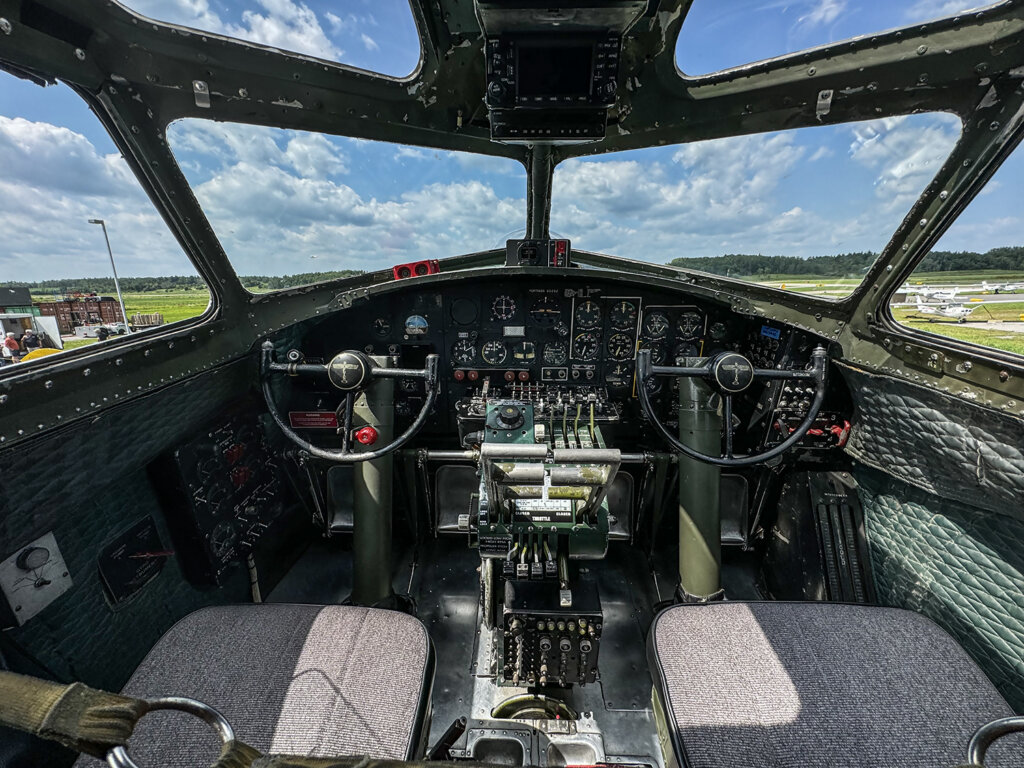
While sophisticated for its day, the cockpit of a B-17 is a far cry from the complexities of modern-day aircraft. Nevertheless, the B-17 was renowned for its handling, toughness and dependability.
[Stephen J. Thorne]
Flying at 25,000-35,000 feet (7,500-10,500 metres), B-17s typically carried 4,000 pounds (1,800 kilograms) of bombs on long missions, though they could carry up to 8,000 pounds (3,600 kilograms) internally for shorter distances at lower altitudes.
The toughness of aircraft such as the Lancaster and the Fortress was the stuff of legend.
The bottom of the English Channel is littered with machine guns, oxygen bottles, ammunition boxes, tools and other dispensables jettisoned to lighten loads during harrowing return flights in heavily damaged bombers.

There were no luxuries in a WW II bomber. Like its contemporaries, the B-17 was bare-bones, a thin aluminum skin all that stood between its 10-man crew, bitter cold, flak and German machine-gun rounds. [Stephen J. Thorne]
The fighter’s wing sliced through the aft section of the bomber, leaving a diagonal gash from the base of All American’s vertical stabilizer and severing the left horizontal stabilizer from the plane. The metal airframe near the right tailplane was the only thing keeping the tail section—and the rear gunner—attached to the aircraft. The fighter broke apart, leaving pieces in the bomber’s fuselage.
The radios, oxygen system and electrics were severely damaged. Though its control cables were severed, the pilot, Lieutenant Kendrick R. Bragg, managed to fly the plane using the bombsight’s autopilot, which ran off electrical wires connected to electric motor servos mounted next to the rudder and elevator.
Still an hour-and-a-half out from their base in Biskra, Algeria, the squadron maintained formation to protect the damaged aircraft until they were beyond the range of enemy fighters.
Expecting to bail out, All American’s crew donned their parachutes. But Bragg got them home, uninjured, though their plane was not quite in one piece. The tail section collapsed on landing.
Incredibly, the aircraft was repaired and returned to service as a “hack”—a reconstituted service aircraft—with the 352nd Bombardment Squadron, 301st Bombardment Group. It flew until it was taken out of service in March 1945.

More B-17Gs—8,680, over twice as many as the F—were produced than any other version of Boeing’s Flying Fortress.
[Stephen J. Thorne]
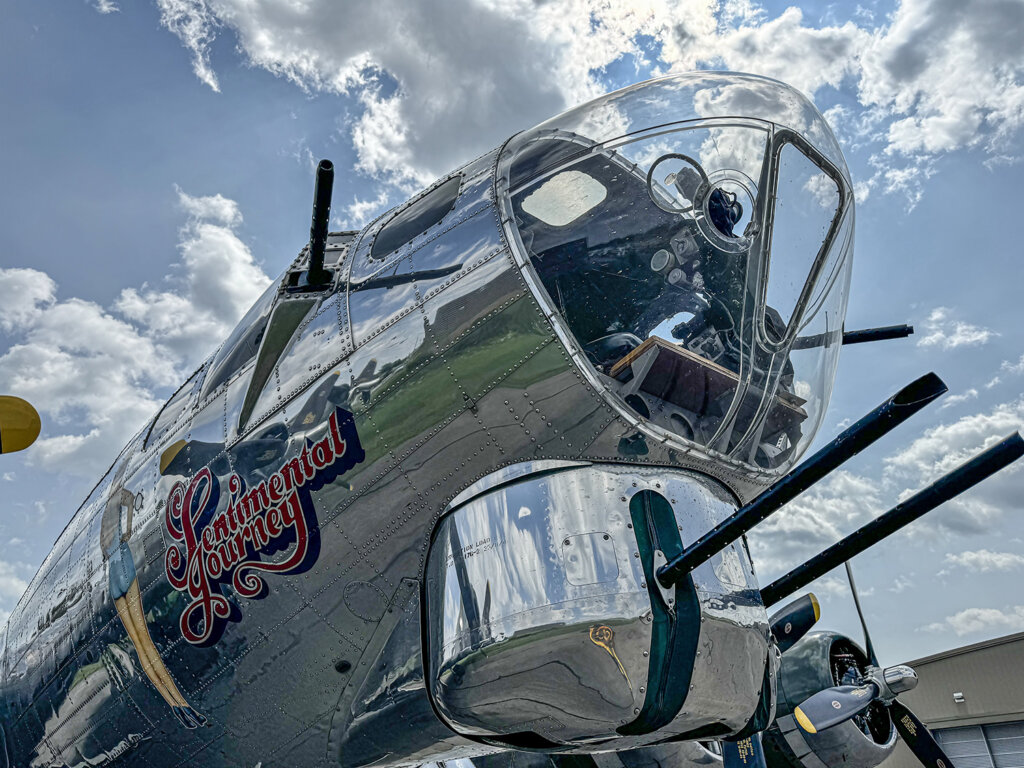
The B-17G had 13 .50-calibre machine guns, including four in the nose section.
[Stephen J. Thorne]
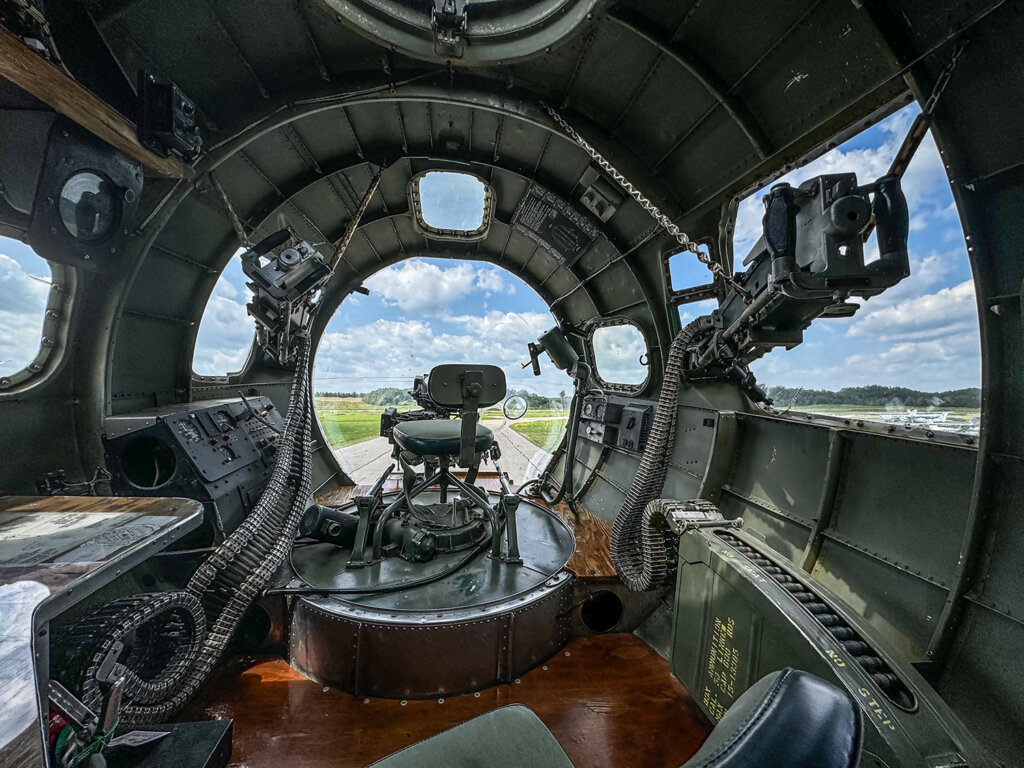
The B-17 navigator manned the cheek turrets (foreground) while the bombardier had the panoramic view from the exposed chin turret. The expression “the whole nine yards” did not originate with the ammunition belts aboard the B-17, or any other aircraft.
[Stephen J. Thorne]
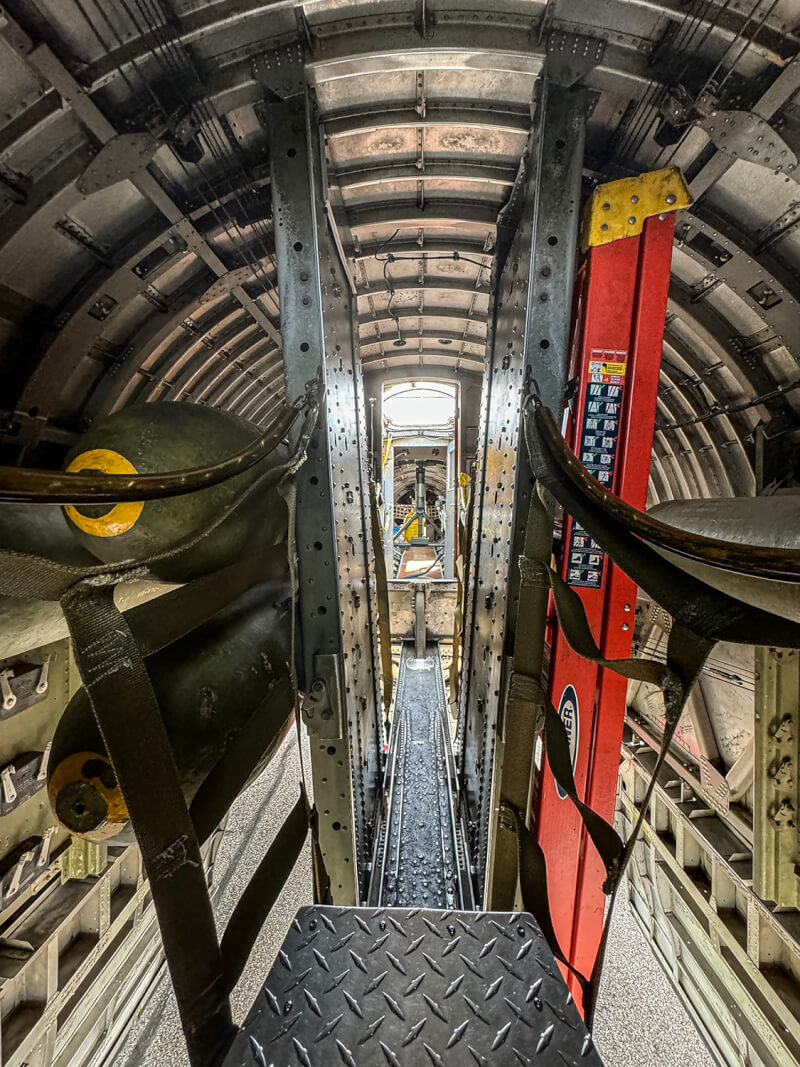
The B-17 was cramped.
[Stephen J. Thorne]

The flight engineer manned the top turret behind the cockpit.
[ Stephen J. Thorne]
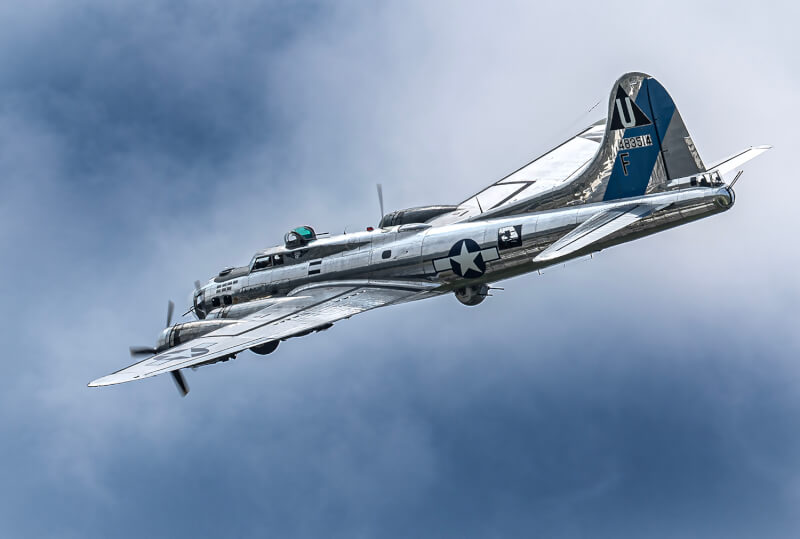
Most air-to-air attacks would come from the rear, though Luftwaffe fighters would also attack head-on periodically. One of the favoured techniques was to close at high speed, then invert and dive steeply at the last second out of the concentration the B-17’s fire.
[Stephen J. Thorne]
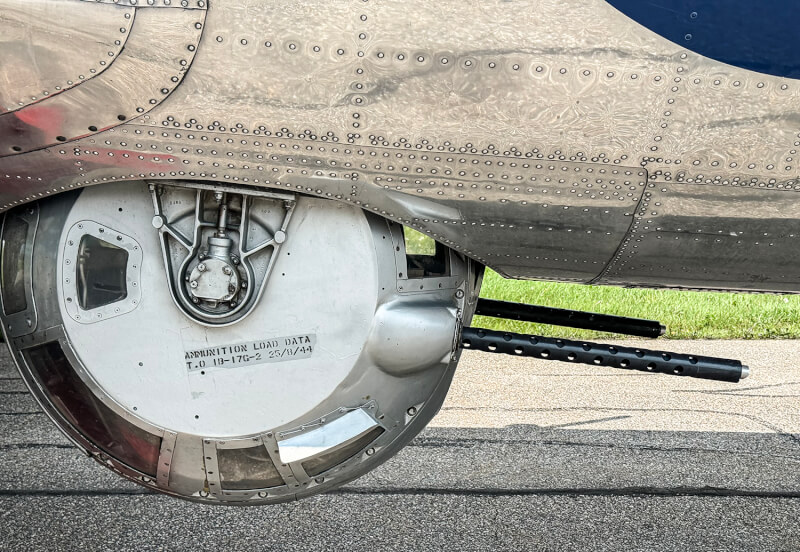
One of the more unenviable positions in the B-17 was the ball turret—not a good spot if you were prone to claustrophobia. The gunner, inevitably the smallest crewmember, was positioned fetus-like inside, locked in with no parachute immediately at hand, and trusting his crewmates would remember to open the hatch for him in an emergency. Though belly turret gunners suffered the fewest casualties among B-17 crew during a three-month survey of the Eighth Air Force conducted in 1944, a higher percentage went down with crashing planes.
[Stephen J. Thorne]
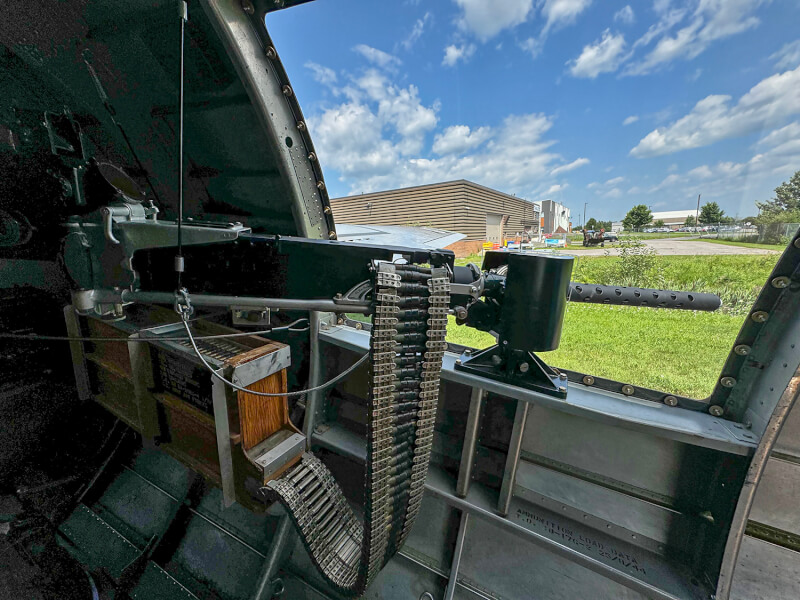
Despite a limited field of fire, the two waist gunners were supplied with more ammunition than any other position on the aircraft. They were also the most vulnerable crew aboard a B-17. During the 1944 survey, they accounted for 19 per cent of battle deaths and 21.1 per cent of the wounded.
[]Stephen J. Thorne]
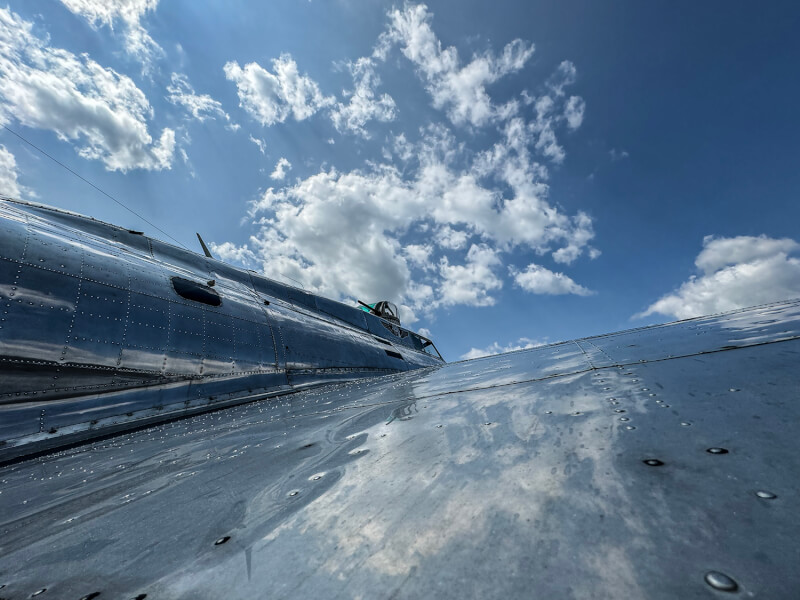
The B-17’s broad wings, with their fuel tanks and four 1,200hp Wright R-1820-97 radial engines, were prime targets for German fighters, making the radio operator vulnerable to strafing attacks.
[Stephen J. Thorne]
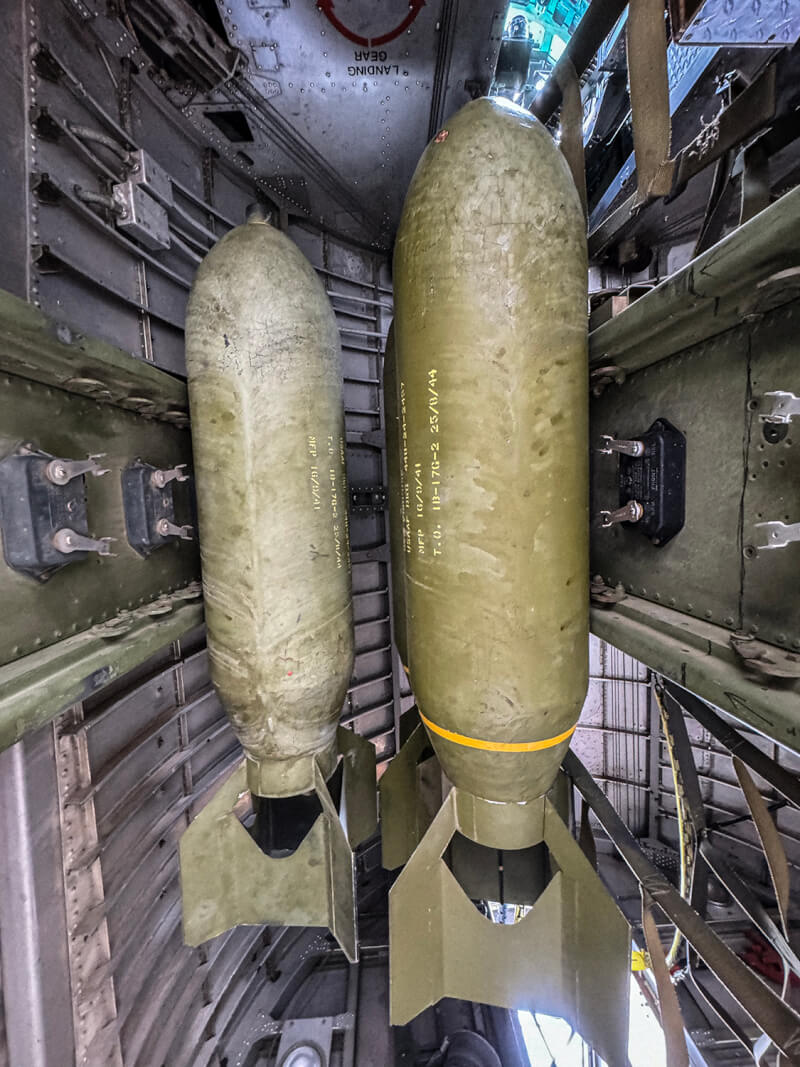
Payload.
[Stephen J. Thorne]
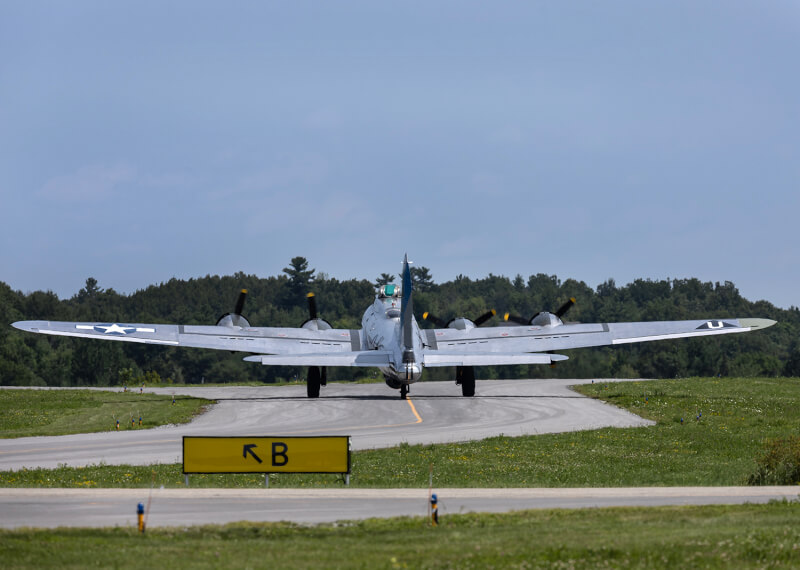
Taxiing out.
[Stephen J. Thorne]
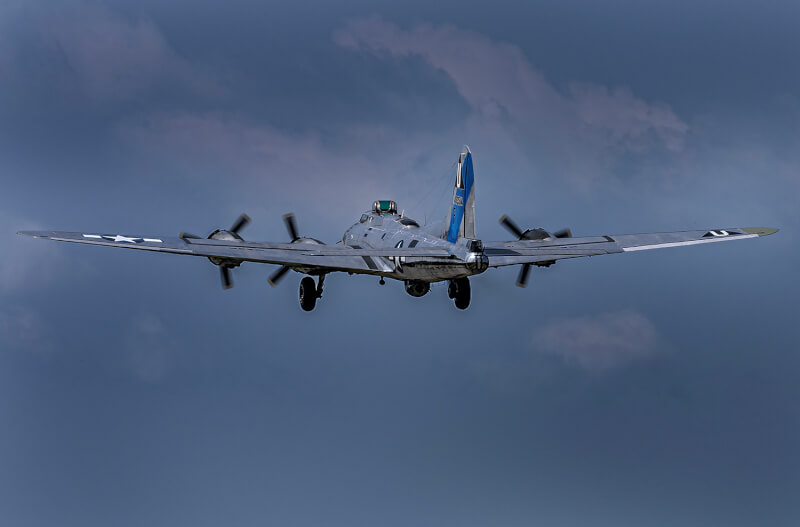
Takeoff.
[Stephen J. Thorne]
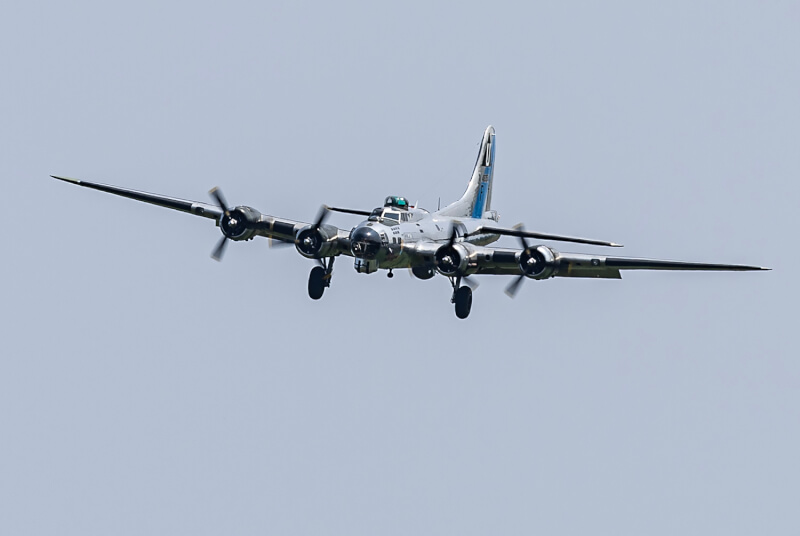
Coming home.
[ Stephen J. Thorne]
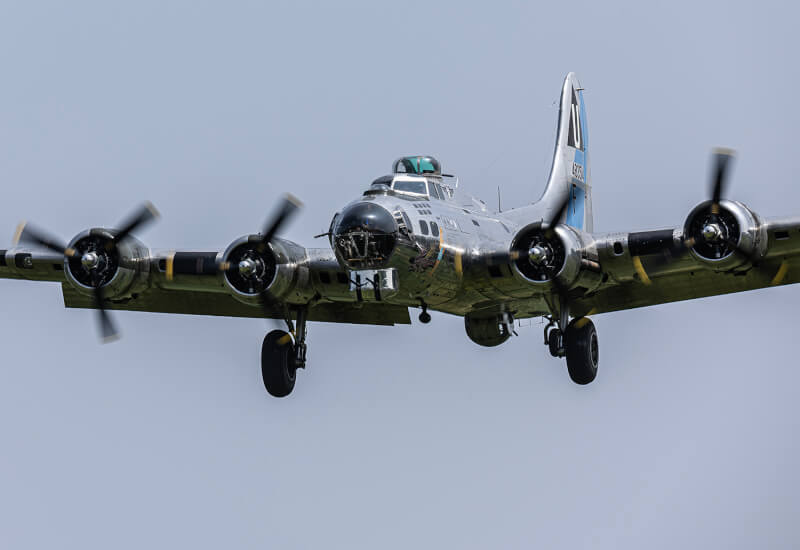
Some 1,117 casualties were recorded among primarily Fortress crew during the June to August 1944 survey, including 110 killed.
[Stephen J. Thorne]
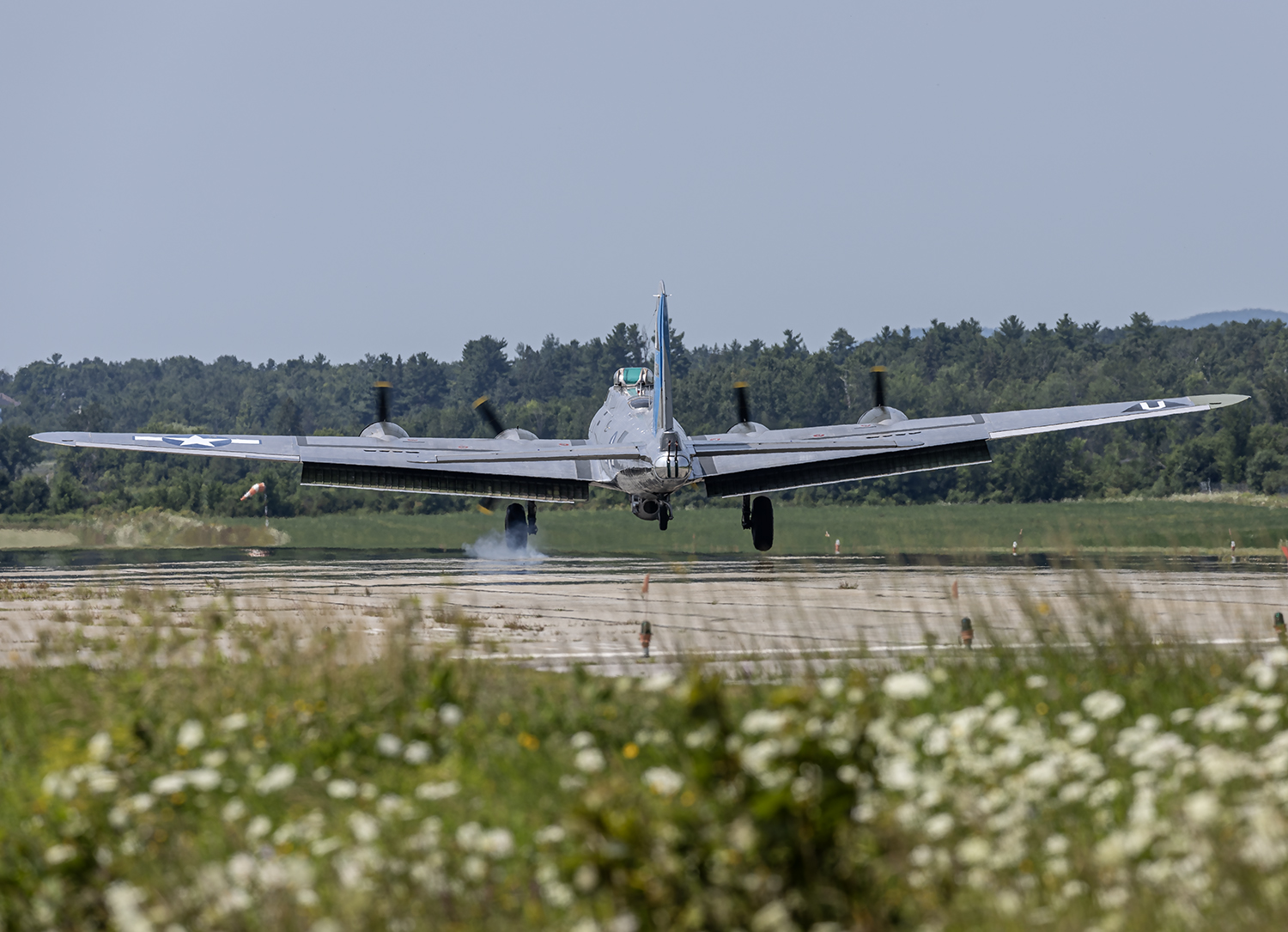
Touchdown.
[Stephen J. Thorne]
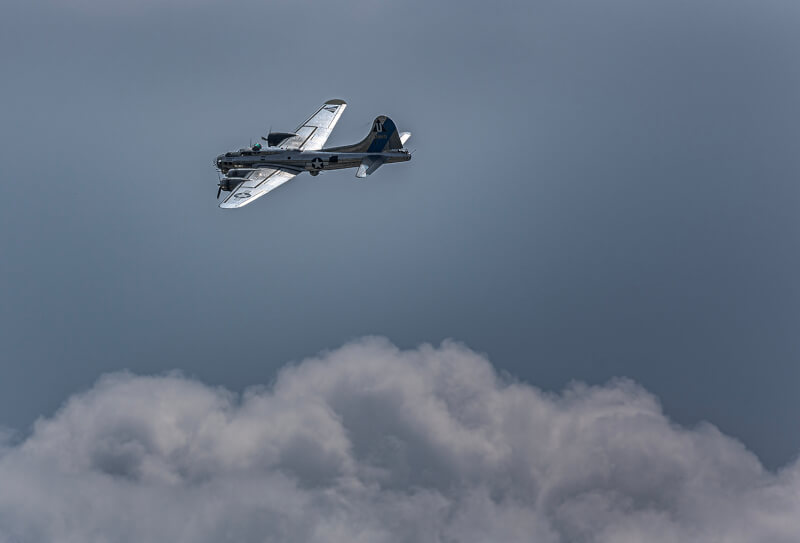
[Stephen J. Thorne]
Advertisement




























